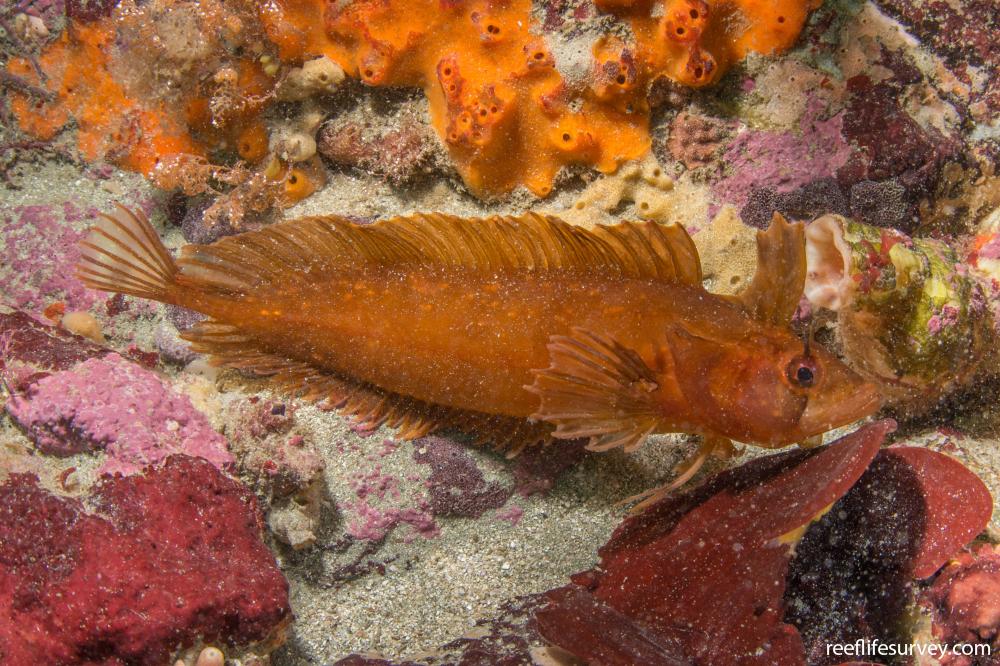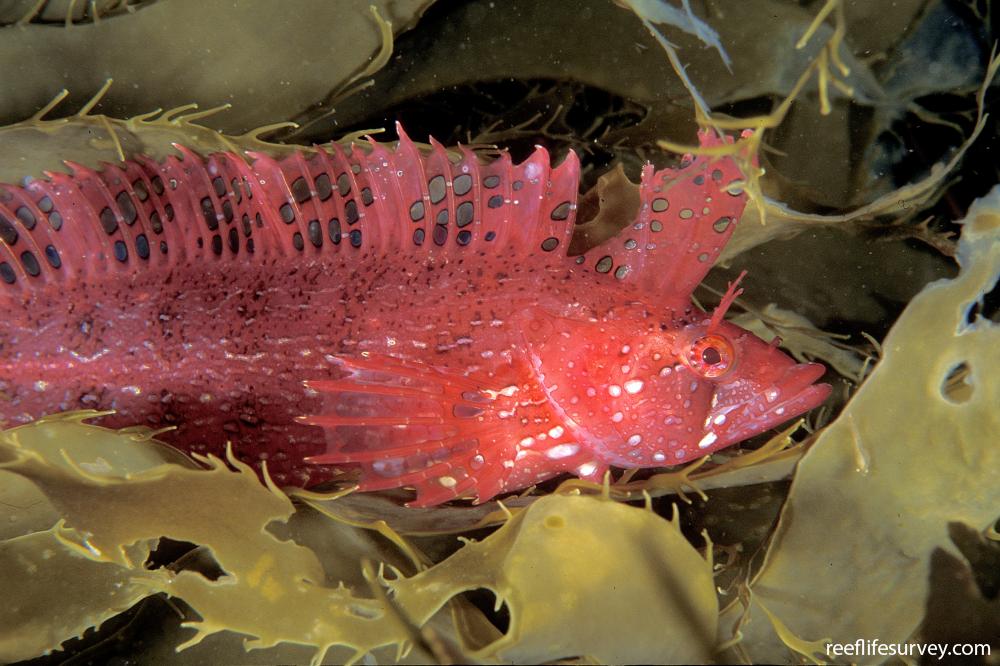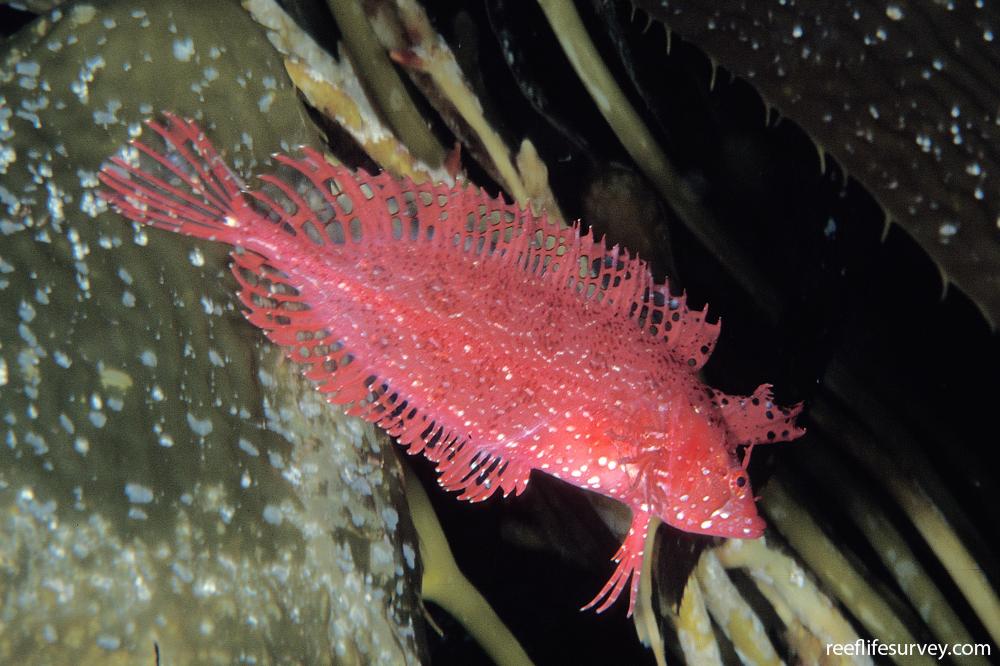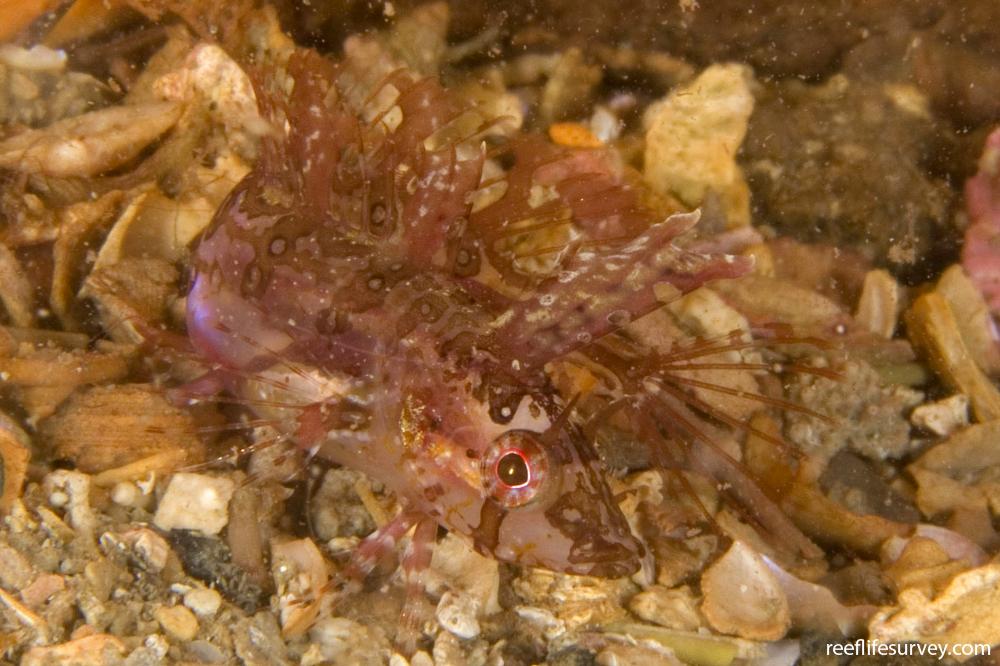Heteroclinus tristis
Forsters weedfishSimilar Species
Same Genus
Distribution
Temperate Australasia
Description
This relatively large weedfish has a long, pointed snout, a long unbranched pair of tentacles above the eyes, and large nasal tentacles. It has a similar long first dorsal fin to species in the Cristiceps genus, particularly C. australis, but differs most obviously by the origin of the dorsal fin being further backwards. In Cristiceps australis the first dorsal fin starts directly above the eye. The species is common among large seaweeds on sheltered and moderately exposed Tasmanian and Victorian reefs, but is very well camouflaged and remains hidden most of the time.
Information
Max Size: 30 cm
Sea Temperature Range: 10.6-23.9°C
Depth: 0-10m
Habitat Generalization Index: N/A
Also referred to as the SGI (Species Generalisation Index), this describes the habitat niche breadth of the species. Species with values less than 15 are found in a relatively narrow range of reef habitat types (specialists), while those over 25 may be found on most hard substrates within their range (generalists). Learn more here.
Conservation and Rarity
IUCN Status: Not Evaluated
Occurrence: Frequent (10.4% of sites)
Occurrence describes how often the species is found on surveys within its distribution. It is calculated as the % of reef sites surveyed by RLS divers across all the ecoregions in which the species has been observed
Abundance: Solitary (1 per transect)
Abundance is calculated as the average number of individuals recorded per RLS transect, where present.
Edit by: Rick S-S





























